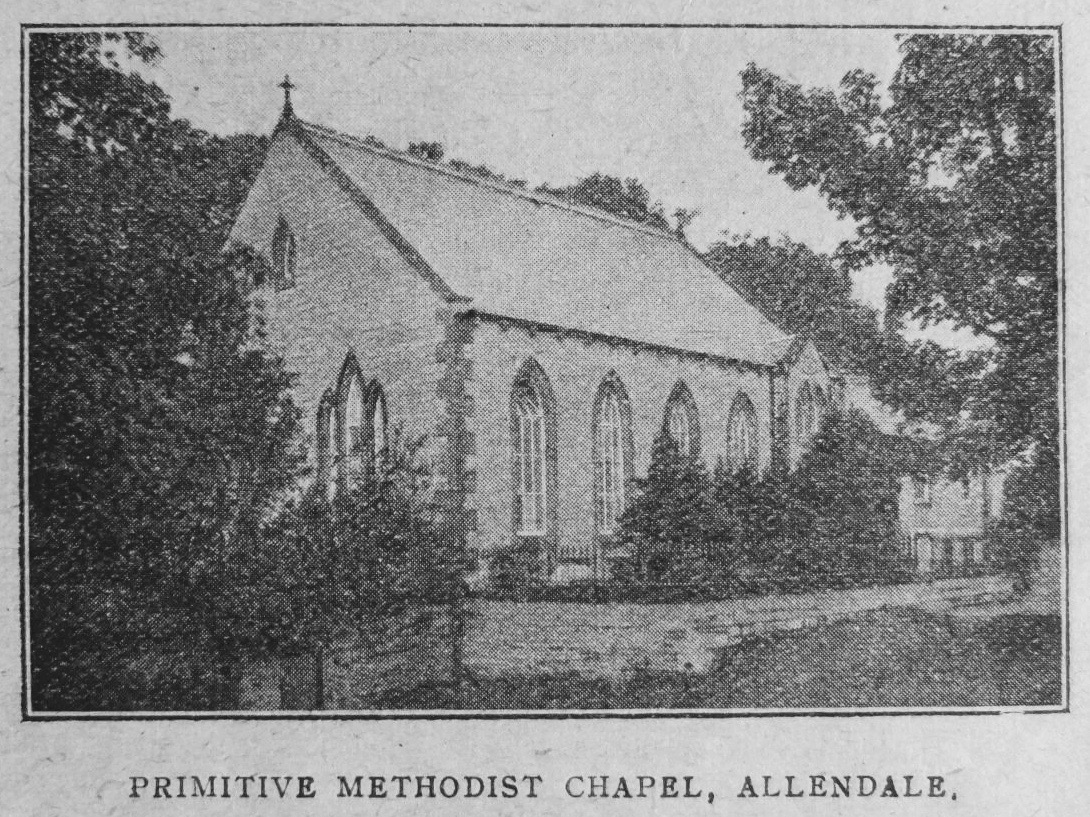
Allendale, Northumberland
Allendale Primitive Methodist Chapel
Last Updated:
29 Nov 2024
Allendale, Northumberland
This is a
Chapel, Place of Worship, Sunday School
54.897514, -2.253060
Founded in
Current status is
Extant
Designer (if known):

Now the local library
Allendale Town has this beautiful stone, neo-gothic vernacular that can be spotted throughout the main lane. This can be said for the Primitive Methodist Chapel, which is located just over the road from the Board School and is now the village library.
This is a beautiful chapel constructed around 200 years ago in the heart of Allendale - certainly after 1807 when the Prims splintered from the rest of the movement, though quoted in 1833 or 1836. There is also talk of an even earlier chapel standing here, which this one may have built upon. Much of what we see though is part of the 1870s extension.
This whole area was an early adopter of Methodism, and was dominant across the fells. It's thought the first preachers missioned here in 1825 from Hexham, with it steadily gaining traction to having its own circuit in 1848. With this said there was activity long before as we know John Wesley preached in the area in the mid 18th century. There are lots of converted and disused chapels around which are very austere and almost like farmhouses - this is one of the most decorated alongside Catton.
By 1861 there were 10 chapels in Allendale alone with one - the Keenley Methodist Chapel being the longest continually serving Methodist chapel in the world. There ended up being around 20 altogether in the area and we'll see a lot more through this series. Methodists were intrinsically involved in the lead mining industry, and workers regularly facilitated meetings in the chapels alongside prayers and hymns. Their faith and struggles brought reason to congregate.
This particular chapel held concerts, meetings as well as a Sunday school for the village children. A reading room was also situated here once the chapel was extended in 1878, effectively providing a library space for lead workers and the rest of the congregation.
The chapel closed in the mid 20th century, and now used for Allendale Library.
Listing Description (if available)


The Ordnance Survey maps shown here illustrate Allendale Town between the mid and late 19th century. You'll see our Prim chapel sitting opposite the board school at the eastern wing of the village. You'll notice very marginal difference in the two images given much is the same today too. The Boys & Girls National School was originally on the lane south east to the Sinderhope area but moved to the crossroads here. The village featured every amenity you would expect at this stage - a smithy for horseshoes and tools, a Market Place and Shambles (meat market), ancient Anglican church as well as mills and breweries. There is also a Quaker meeting house in the west end of the village - Allendale being known for non-conformism.

There's a few additions shown on the 1922 map with Allendale conforming to modernity and new infrastructure required to upkeep a connected village. A few separate banks are illustrated as is a proper police station. However, there is also a historic tradition of an almshouse here now, sheltered housing for the infirm & widows in the village. A second smithy is referenced too.

The chapel in November 2024

The chapel at the turn of the 20th century. Unknown original source.

The chapel in 1921. Source: My Primitive Methodists
